Would you like to quilt your own quilts on your regular home sewing machine? Are you afraid to try because you don't think you have the right quilting equipment? What if I told you that you can add beautiful texture to your quilts without investing in a specialty machine? If your machine can sew a straight stitch, it can be used for machine quilting.
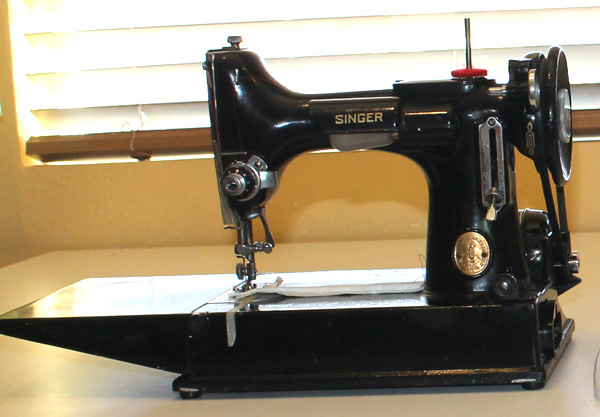
We recently received the following Ask an Expert question:
"Hello, I am a novice sewist and trying patchwork and quilting, but my machine doesn't do free-motion. Can I still quilt on my machine, or does it mean I have to do it by hand?"
Yes, you can do free-motion quilting using a regular sewing machine.
Free-motion quilting is a technique whereby quilting stitches are added by sewing in any direction on the surface of the quilt.
Two things are needed to perform free-motion quilting:
- The feed dogs need to be disengaged.
- A free-motion quilting foot needs to be used.
If you think these options are not available to you on a basic sewing machine, think again! In fact there are a growing number of quilters who quilt on their antique Singer Featherweight machines. Where there's a will, there's a way!
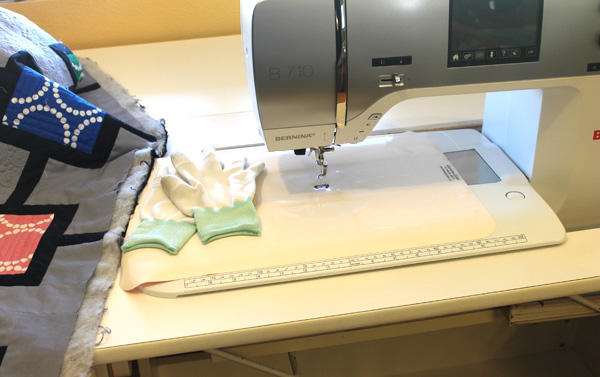
Supreme Slider in action
Covering the feed dogs
If you cannot disengage, or lower your feed dogs to get them out of the way, you can cover them instead. My favorite way to cover the feed dogs on my machine is with a special piece of material called a Supreme Slider. This specially made plastic can be temporarily adhered to the bed of your machine, covering your feed dogs. It also helps by acting as a slippery surface on which your quilt can glide.
Lower your stitch length to zero with the feed dogs covered and you've just completed Step 1. In fact, some machines may actually perform better using this technique. If you can lower your feed dogs, try with and without engaging them and see what you prefer.

Photo via Leah Day
Acquiring a free-motion foot
If your machine does not come with a free-motion foot, you can get a generic darning foot that is made to fit most sewing machines. Leah Day, instructor of Free Motion Fillers, Vol. 1, Free Motion Fillers. Vol. 2 and Free Motion Quilting a Sampler, has put together a video tutorial showing how to modify the foot to help it perform better on your machine.
Other ways to try quilting using a regular sewing machine
If free-motion quilting is still not for you, there are other options for quilting using a regular sewing machine. You can add plenty of amazing texture to your quilts with simple straight line quilting. A walking foot or built-in even-feed system works well for stitching straight lines. However, if you don't have either of these options, you can still quilt straight lines with your favorite all-purpose sewing foot.
You can quilt a series of concentric, geometric spirals inside a square block. The lines don't have to be even and they don't even have to be perfectly straight to add extra depth and dimension to your quilt.
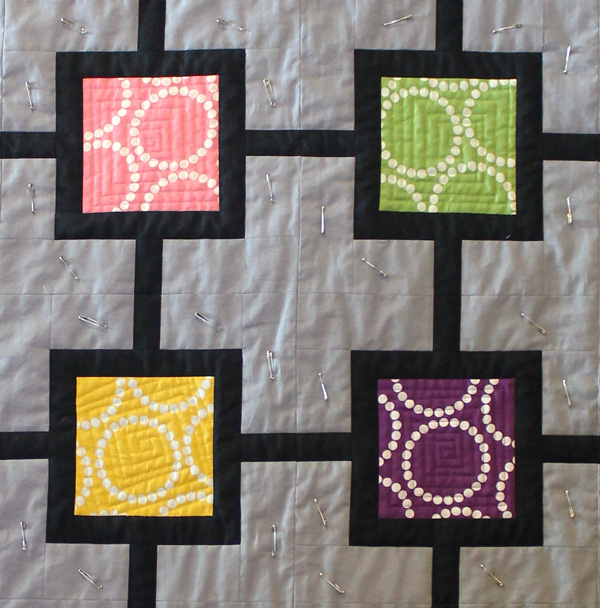
Photo via ChristaQuilts
Another great way to add interesting quilting with a walking foot or regular sewing foot is to stitch a series of straight lines spaced very close together over the surface of your entire quilt. This is sometimes called "matchstick quilting" and is a very popular design to use for modern quilting.
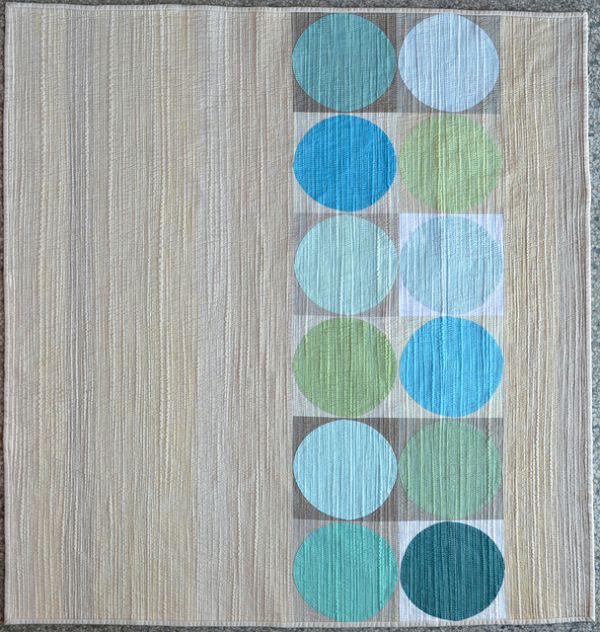
Cycles 2 Quilt, Photo via SheCanQuilt
To machine quilt matchstick lines, simply start on one side of the quilt and stitch a line from one end to the other. Do not worry about keeping your lines completely straight. Organic, imperfect lines actually add more interest to the quilt. Continue stitching in the same direction all the way across the quilt. You can periodically mark a straight line with painter's tape to keep the lines going in roughly the same direction.
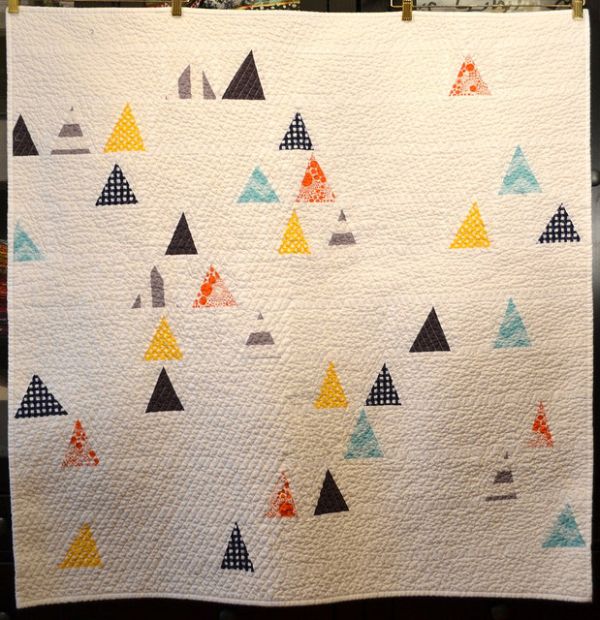
Triangle City Quilt, Photo via SheCanQuilt
Quilting lines spaced further apart look great on quilts with large amounts of background negative space. They can be quilted at a diagonal angle across the quilt to add interest and break up the space. So don't feel limited if you can't or don't wish to free-motion quilt your creations. The sky is the limit when it comes to creativity, and it all starts with a straight line.

I keep breaking needles. Tried top stitch #14, slowed way down and only went forward . Needles keep hitting throat place !
I am learning on a 1933 Singer 15-91 which I’ve dedicated solely to free motion quilting. I needed a smoother surface because the fabric wasn’t sliding well along the machine surface and table. I found a cheap, but just as effective, alternative to the supreme slider, is to use a Teflon oven liner. You can get many sizes, and just need to cut a small hole for the needle. Great for the frugal quilter.